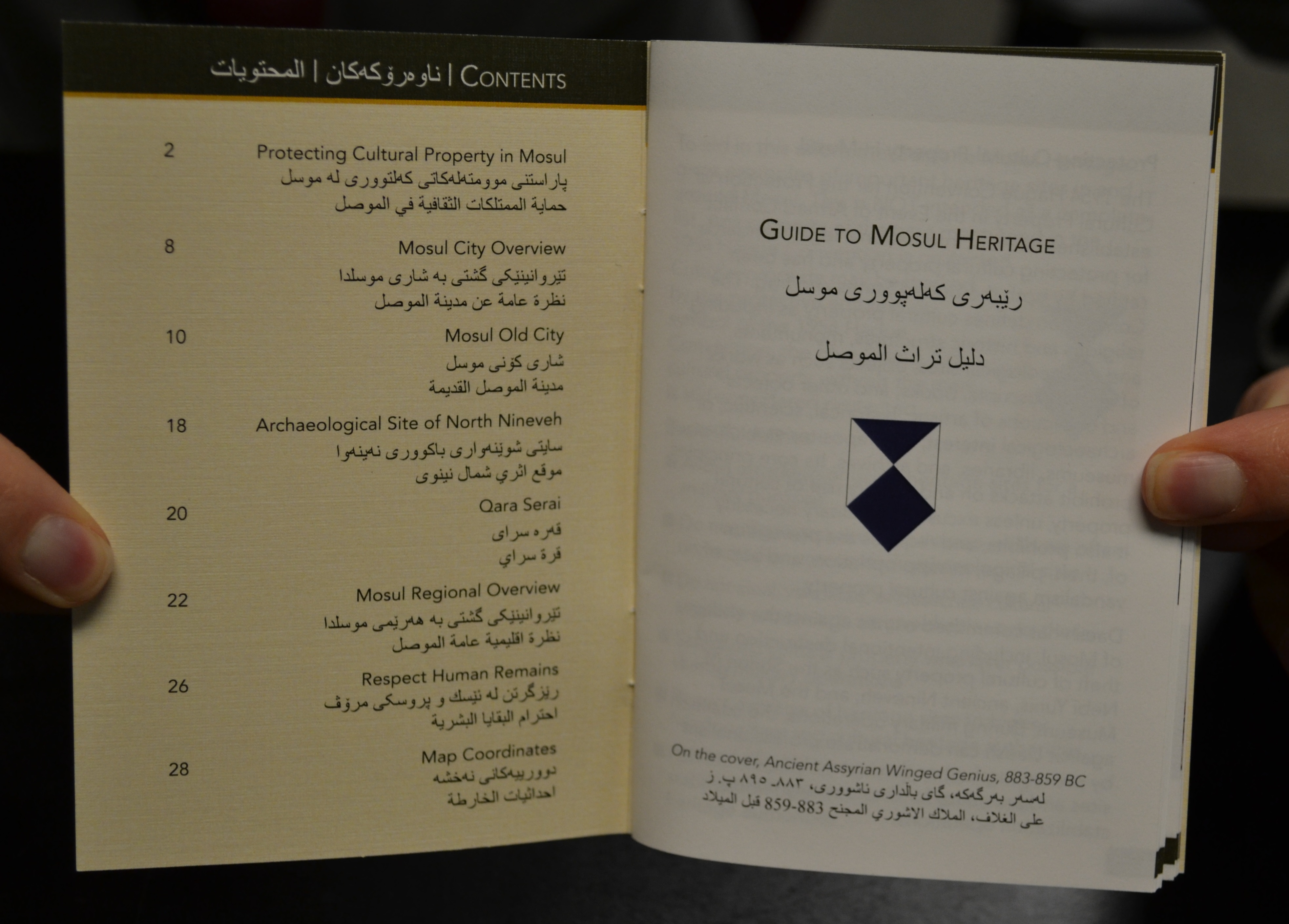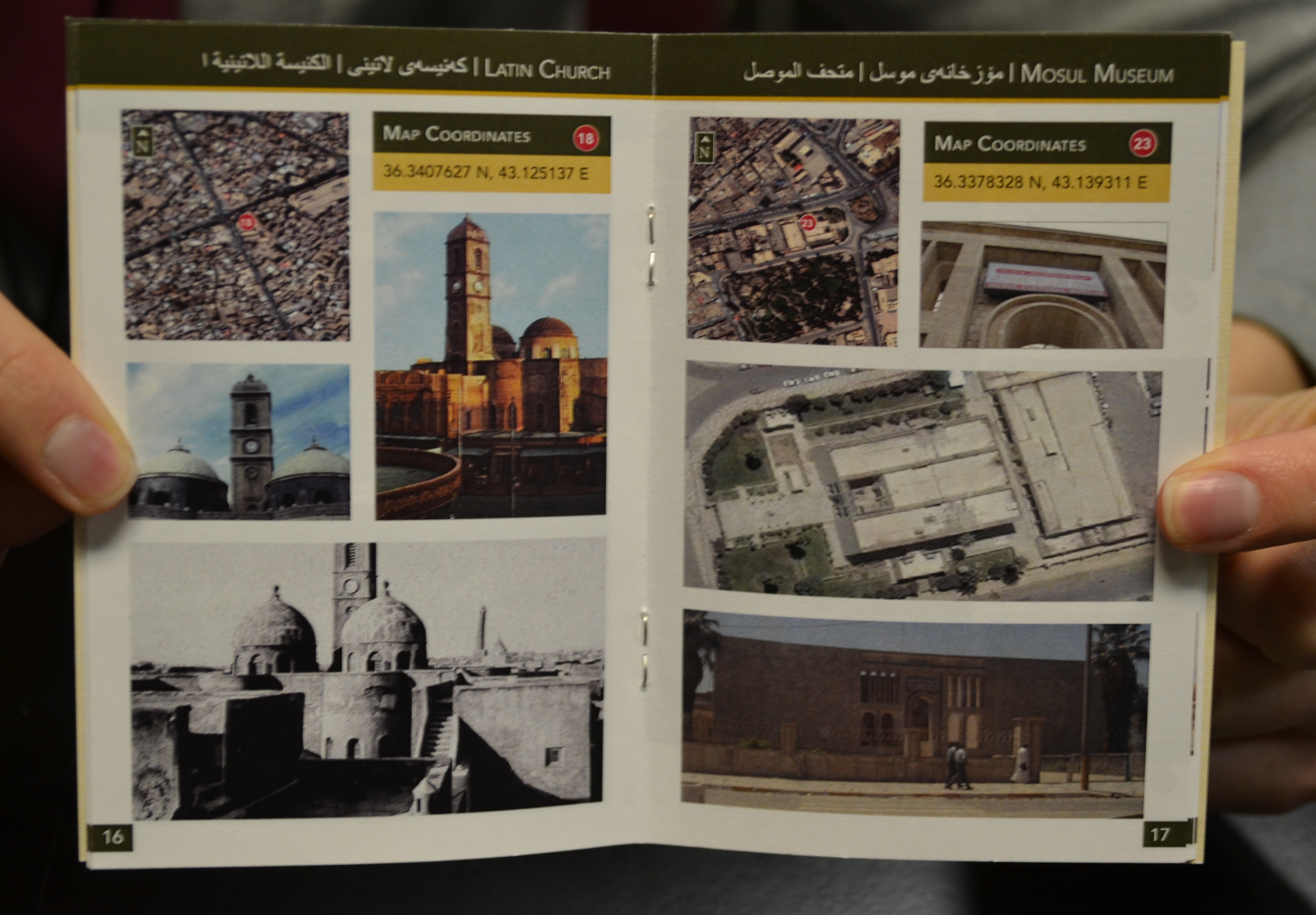Any Questions?
On Thursday March 9, 2017, interns toured the Museum Conservation Institute (MCI) and interviewed Smithsonian fellow Dr. Katharyn Hanson, an archaeologist who specializes in the protection and conservation of cultural heritage. Interns learned about Dr. Hanson’s work and received excellent advice from her own experiences.
 Q: Please tell us who you are!
Q: Please tell us who you are!
A: I’m Katharyn Hanson, I’m an archaeologist, and I’m a postdoctoral fellow at the Smithsonian out here at the Museum Conservation Institute, and I’ve been focusing my research and work on protecting cultural heritage sites in Iraq.
Q: What do you do at the Smithsonian?
A: I’ve been helping Jessica Johnson, who has a long-term project training and working with Iraqi colleagues, to protect cultural heritage in northern Iraq. Actually, in all of Iraq. At the Institute in Erbil, we teach students from pretty much every province, and by students I really mean trainees. Everybody’s got their Bachelor’s already; we’re teaching Master level classes. [The trainees] are people who are currently working in cultural heritage, so they work in museums, or they work as an archaeologist for the government of Iraq, or for the Kurdish regional government. And both of those main offices recommend students to us who could get training. This past calendar year, starting last January ’til this year, has been an ongoing fundamentals of conservation training course that we finished up this past fall. And then this year we’ve been working on helping protect a site called Nimrud and making sure we’re able to get equipment, and training, and expertise in connection with the folks who are going after that site to protect it directly.
Q: What has been the most surprising thing about your experience?
A: I think one of the things, this isn’t surprising in a crazy way, I think I could have guessed this, but probably one of the things I’m most grateful for at the Smithsonian has been the depth of expertise in areas that I didn’t maybe even know fully existed before arriving here. So I knew the Smithsonian was large, I knew that I could call on experts who could help advise on a wide number of things before I got here, but once I arrived and started working here this past May I really began to appreciate how many experts there were in different types of fields, particularly with the GIS work and remote sensing. Looking at what other folk at the Smithsonian have done with that has been pretty incredible. It might not necessarily directly relate to archaeology sites, so migratory patterns of birds or where our botany samples come from or something like that, but that has been a really interesting space that I have found a lot to learn in.
Q: Do you have any advice for other fellows or interns?
A: One of the things I’m in a unique position to talk about is that my supervisor is not in my immediate field. So, Jesse works in conservation and I work in archaeology, and those are two similar fields, but one of the things that I think I wish I had known when I was in college and doing internships was that I could have learned a lot by doing not just archaeological internships. I think that that’s something that as I’ve gotten a little more advanced in my career, I’ve learned that working in tandem with other fields along with your own is something that’s very feasible. And so that’s something I would definitely recommend and something that I’ve appreciated being able to do as a fellow.
Q: What are the two items you have with you?
A: [The first] is an image of a satellite picture that  was taken in January. This is one small part of the ancient site of Nimrud, which is a site in Northern Iraq. It’s about 20 kilometers south of Mosul, and Nimrud is most recently famous for having been a site which ISIS based out of Mosul was intentionally destroying. And Nimrud suffered a lot of damage. What you’re looking at here is just one small portion of the site where you see this northwest palace. And in this area here and in this area here, ISIS came in and intentionally blew the site itself up, in addition to taking jack hammers and sledge hammers to
was taken in January. This is one small part of the ancient site of Nimrud, which is a site in Northern Iraq. It’s about 20 kilometers south of Mosul, and Nimrud is most recently famous for having been a site which ISIS based out of Mosul was intentionally destroying. And Nimrud suffered a lot of damage. What you’re looking at here is just one small portion of the site where you see this northwest palace. And in this area here and in this area here, ISIS came in and intentionally blew the site itself up, in addition to taking jack hammers and sledge hammers to  reliefs on the wall. And what they were destroying is some of the most important, ancient material that comes from that part of the world. This is stuff that, really, was at the heart of a capital city around six to seven hundred BC. Nimrud was the capital of the Neo-Assyrian empire, which was in control of a vast swath of land from the Mediterranean to the Gulf. And this really is the Roman empire before the Roman empire existed; they controlled everything. When this type of destruction takes place, what we’re losing is all the information, all the archaeological information, and all the art historical information that we have still in context and in situ at that site. And that’s a really tragic loss. So the Smithsonian’s been starting to get involved in this site specifically at Nimrud because the Smithsonian has a long-term commitment towards helping our Iraqi colleagues.
reliefs on the wall. And what they were destroying is some of the most important, ancient material that comes from that part of the world. This is stuff that, really, was at the heart of a capital city around six to seven hundred BC. Nimrud was the capital of the Neo-Assyrian empire, which was in control of a vast swath of land from the Mediterranean to the Gulf. And this really is the Roman empire before the Roman empire existed; they controlled everything. When this type of destruction takes place, what we’re losing is all the information, all the archaeological information, and all the art historical information that we have still in context and in situ at that site. And that’s a really tragic loss. So the Smithsonian’s been starting to get involved in this site specifically at Nimrud because the Smithsonian has a long-term commitment towards helping our Iraqi colleagues.
 And then this is the Guide to Mosul Heritage booklet. This was written for the armed forces that are currently involved in taking back Mosul from ISIS. This has been distributed by the U.S. Civil Affairs in their advise and assist role in Iraq. We gave a bunch of printouts to them when we were there in January and when we were there in August, and they’ve distributed it to the Iraqi Armed Forces and the Kurdish Peshmerga Forces. It’s printed in both Arabic and English, and you can see in here we’ve got some basic outlines of why under the laws of war it’s important to not intentionally target cultural sites. And then we have highlights on the main, most important sites in Mosul Nineveh Province to protect. At the end we also have a guide for identifying human remains because of all the cultural sites and sites of significance, right now sites of human remains are really important to make sure that they are not damaged.
And then this is the Guide to Mosul Heritage booklet. This was written for the armed forces that are currently involved in taking back Mosul from ISIS. This has been distributed by the U.S. Civil Affairs in their advise and assist role in Iraq. We gave a bunch of printouts to them when we were there in January and when we were there in August, and they’ve distributed it to the Iraqi Armed Forces and the Kurdish Peshmerga Forces. It’s printed in both Arabic and English, and you can see in here we’ve got some basic outlines of why under the laws of war it’s important to not intentionally target cultural sites. And then we have highlights on the main, most important sites in Mosul Nineveh Province to protect. At the end we also have a guide for identifying human remains because of all the cultural sites and sites of significance, right now sites of human remains are really important to make sure that they are not damaged.



Thank you so much to everybody who made this day possible!






